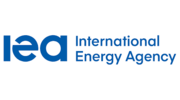News Release from International Energy Agency (IEA)
Wind Industry Profile of
Latin America’s opportunity in critical minerals for the clean energy transition
Latin America is an established producer of several minerals essential for clean energy technologies, and could build on its well-established mining sector to diversify into new minerals and help the global economy avoid the shortfalls and bottlenecks that could threaten clean energy transitions.
The region already produces large quantities of lithium, which is needed for batteries, and copper and underpins the expansion of renewables and electricity networks. But Latin America could expand into a range of other materials such as rare earth elements that are required for electric vehicle motors and wind turbines, and nickel, a key component in batteries. However, to reap this potential, mining activities must adhere to high environmental, social and governance (ESG) standards and also seek ways to generate tangible benefits for local communities.
Latin America accounts for 40% of global production of copper, led by Chile (27%), Peru (10%) and Mexico (3%). The region’s share of global reserves is largely similar to its share of production, although Mexico and Colombia have untapped potential. Existing producers could ramp up production swiftly but may face efficiency challenges in the longer term due to declining ore quality in the resources. The region’s share of global copper exploration expenditure has gone up from 35% to 45% in the past decade, indicating the potential for further production increases.
Today the region supplies 35% of the world’s lithium, led by Chile (26%) and Argentina (6%), the second and fourth largest global producers, respectively. The region holds more than half of global lithium reserves, mainly located in Argentina (21%) and Chile (11%). Bolivia also holds huge untapped lithium resources, almost comparable to the size of today’s global lithium reserves, although the lack of infrastructure hampers them from being economically viable. Moreover, the region’s lithium – predominantly lithium carbonate from brine – produces fewer emissions than mining from rock and could benefit from the growing adoption of lithium iron phosphate batteries. Latin America could therefore have an even more important role to play in meeting rapidly rising global demand for lithium. The region’s lithium exploration spending more than doubled over the last decade, from USD 44 million in 2010 to USD 91 million in 2021, and there is scope to step up activities even further given that the region’s share in global exploration spending fell from 52% to 36% over the same period.
Beyond copper and lithium, Latin America has significant potential in graphite, nickel, manganese and rare earth elements production. Brazil alone holds around one fifth of global reserves in each of these resources, but as of today produces only small to moderate amounts, between 0.2% of global production of rare earth elements and 7% for graphite. Latin America has not yet attracted sufficient investment in line with its potential, for example, only 7% of the global exploration budget for nickel and rare earth elements is allocated to the region.
Future exploration campaigns would benefit from updated national geological surveys, as the current geological information does not always cover energy-related critical minerals which have gained more attention in recent years. Chile’s geological service SERNAGEOMIN provides detailed open-source geological data with regional and mineral specific focal points. Brazil has established an exclusive division on critical minerals under the geology department (DIPEME). The division has issued regulations reducing the administrative burden for strategic mining projects, with a special focus on lithium and rare earth elements, while also considering graphite, copper and cobalt. Colombia has recently launched a strategic roadmap, Copper Route, to expand the domestic copper industry. However, more information alone will not be sufficient to trigger the investment needed to exploit fully these resources. Governments need to establish frameworks to attract increased investments in mining and processing activities, setting clear regulations and creating incentives, while ensuring compliance with ESG standards. Dialogue with stakeholders, investors, as well as an increase in international cooperation will be crucial for both the design and the implementation of these frameworks.
Mining must avoid and mitigate adverse impacts on the environment and local communities
Mining has historically accounted for between 13% and 19% of Latin America’s incoming foreign direct investment. The sector has great development potential, but at the same time is accompanied by a high risk of environmental degradation and adverse impacts on local communities. ESG issues are already a top concern for international mining companies and stakeholders.
Environmental standards are not only crucial for protecting the environment, but also for gaining and keeping the support of local communities. Major disasters during the last decade have fed anti-mining sentiment. Prominent examples include the 2014 spill of 40 000 cubic meters of sulfuric acid above the Sonora River in Mexico, affecting the water supply of thousands of people, and the 2019 tailings dam disaster at Brumadinho, Brazil, which killed 270 people. Although Latin American countries have put in place frameworks for environmental licensing and regulation, there is still room for improvement in terms of enforcement and compliance standards, according to a recent report of the Inter-American Development Bank.
Prior to commencing new projects, baselines should be established for key environmental indicators, such as groundwater quality, and then monitored continuously during operations. Top priority should be given to thorough risk and tailings management, response preparedness and auditing. There needs to be transparency about water use, and on the characteristics of waste water and other emissions. Governments need to provide robust regulatory regimes with sufficient permitting and compliance staff, as well as reliable public information and emergency response plans that are well structured and match the scale of risk. Further specific guidance for both governments and mining companies has been developed by the United Nations Environment Programme, with the support by Group of Friends of Paragraph 47, which includes Argentina, Brazil, Chile and Colombia.
In Latin America, mining projects can face particularly strong opposition from local communities. According to one worldwide database on mining conflicts, 45% of reported conflicts are located in Latin America, where activities are often located near sensitive and biodiverse ecosystems, many of which are home to vulnerable communities. These elements, paired with the intensive use of land and water resources, and the deployment of heavy machinery brought by mining activities, raise the likelihood of conflicts and create challenges for companies to obtain a ”social licence to operate”.
Social licence generally refers to whether a company or project has the ongoing acceptance of the local community, beyond what is required by legal or regulatory processes. Key factors for companies to achieve and maintain this approval in Latin America include the participation of affected stakeholders, working with communities to maximise benefits and minimise impacts, as well as compliance with robust sustainability standards.
Stakeholder participation
Although countries in Latin America have established frameworks for consulting and involving local stakeholders, the formal processes in place cannot guarantee support for individual projects. Stakeholders frequently include local indigenous or ethnic groups that have to be consulted under the principles set in ILO Convention 169 on Indigenous and Tribal Peoples (ILO 169). Over the last three decades, Latin American countries have adopted different approaches to implementing the obligations under ILO 169, shaped by the political and institutional structures of each jurisdiction. These efforts have sought not only to ensure a better representation of indigenous communities in the decision making around mining projects, but also to reduce risks for investors and project implementation. At the same time, some companies have developed ESG management procedures that go beyond what is foreseen by regulations.
- Source:
- IEA
- Author:
- Press Office
- Link:
- www.iea.org/...
- Keywords:
- Latin America, IEA, critical minerals, energy transition, renewable energy, potential, role, producer, copper, ithium, battery, strorage, mining
























